- Blog
- KHY by Kylie Jenner Marketing Breakdown: What’s Fueling the Hype & What’s Falling Apart
KHY by Kylie Jenner Marketing Breakdown: What’s Fueling the Hype & What’s Falling Apart
-
Nikolett Lorincz
- Marketing Breakdowns
- 6 min read
Table of Contents
What happens when one of the world’s most followed celebrities launches a fashion brand?
You get instant traffic, headlines, and a flood of orders. That’s exactly what happened with KHY by Kylie Jenner—a label that’s raking in over $1.3 million in monthly sales and clocking 1.4 million+ pageviews, all powered by Kylie’s magnetic influence.
But here’s where it gets interesting.
KHY’s got the hype, the followers, the drops… but it also has cracks in its foundation that any marketer, brand builder, or founder should be paying attention to.
In this breakdown, we’ll unpack what KHY is getting right and where it’s losing momentum. If you’re trying to grow a fashion brand, build around a personal brand, or just love dissecting high-stakes digital strategy, there’s a lot to learn here.
Let’s get into it.
1. Kylie is the marketing strategy
Let’s be real: Kylie Jenner is KHY’s biggest asset.
With nearly 400 million followers on Instagram, Kylie doesn’t need traditional advertising. Her personal brand is the campaign.
She posts styling tips, behind-the-scenes looks, new arrivals, and moments that feel raw and real. That authenticity (or at least the perception of it) creates a strong emotional connection.
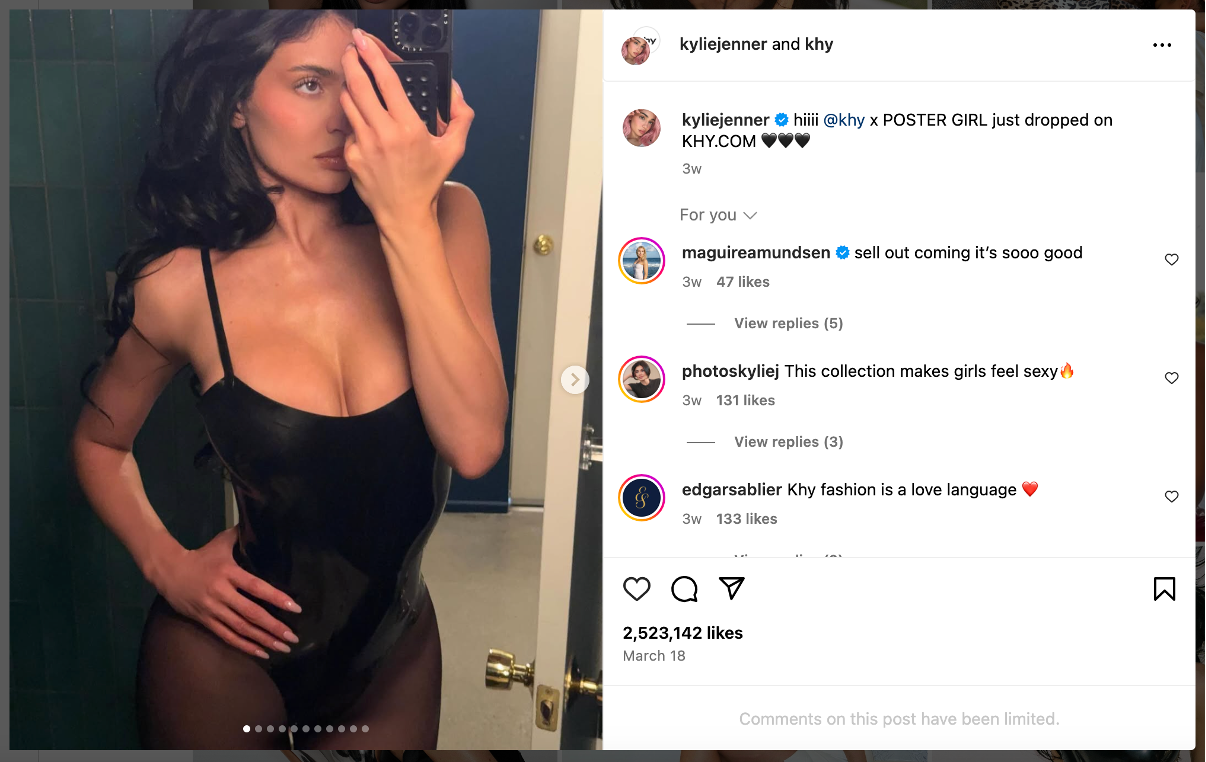
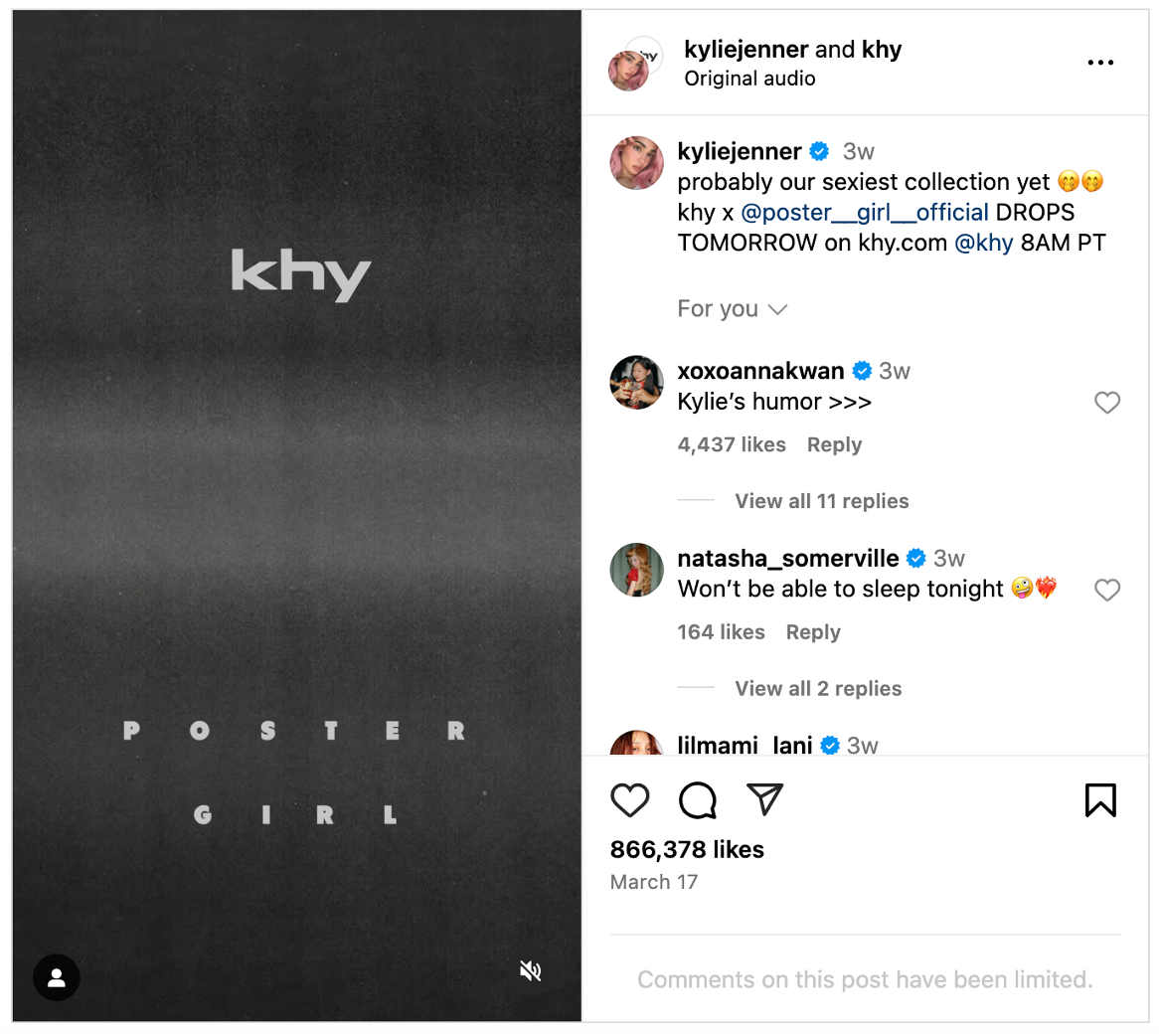
This is textbook personal branding at scale, and it works. Fans don’t just want the clothes—they want the lifestyle.
Takeaway: If you’re leveraging a personal brand, don’t just push products. Tell a story, show the process, and let people feel like they’re part of the journey.
2. KHY sells a lifestyle, not just clothes
What makes people hit “Add to Cart” on a $140 faux leather jacket?
It’s not just the item—it’s the image. KHY doesn’t sell basics; it sells an aesthetic. Think elevated streetwear meets runway edge. The marketing is aspirational, yet still accessible.
Most pieces are priced under $200, which positions the brand in a sweet spot: luxury feel without the luxury price tag.
This strategy builds emotional appeal and makes followers feel like they’re buying into something bigger than fashion.
Takeaway: People don’t buy products—they buy how those products make them feel. Craft a brand narrative that lets your audience envision a better version of themselves.
3. FOMO-driven drops and ads
KHY uses a limited-drop model—a trick straight out of Kylie Cosmetics’ playbook. Thanks to this strategy, every release feels exclusive.
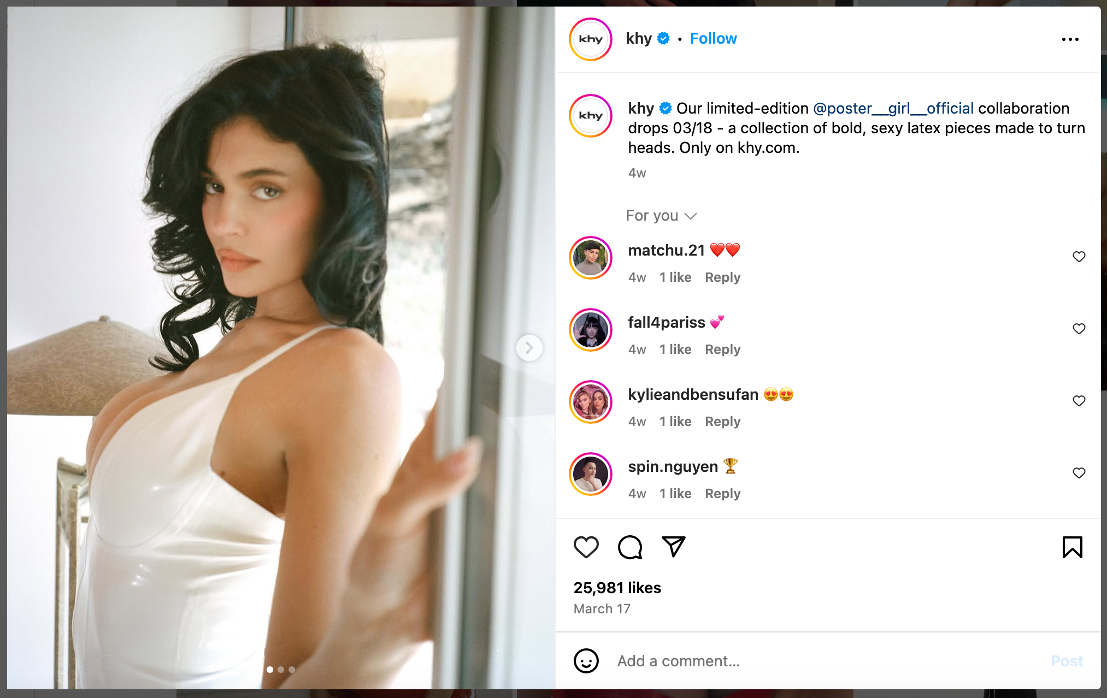
The copy used in ads—like “Shop before it’s gone”—also pushes urgency.
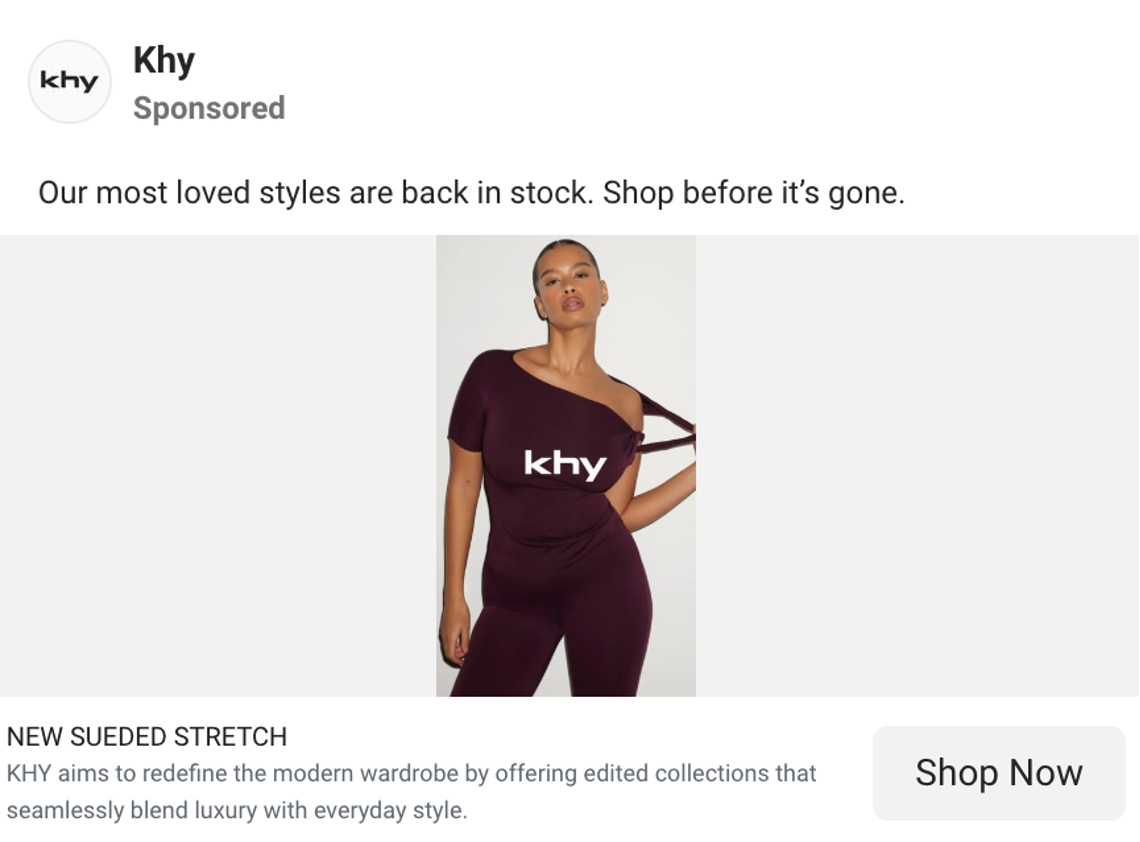
Even when items aren’t truly limited, the perception of scarcity drives action. Combine that with Kylie’s influence and you’ve got a FOMO machine that converts.
But here’s the catch: after the first few KHY drops, the hype started to fizzle. Why?
Inconsistency.
The early collections focused on collaborations, building anticipation. Later ones felt random. That lack of cohesion diluted the brand story and left consumers confused.
Takeaway: Urgency works—but it has to be part of a larger, consistent narrative. Don’t just drop products. Drop stories.
4. Proven conversion rate optimization strategies
KHY’s site has some smart CRO tactics in play:
A welcome popup appears a few seconds after new visitors arrive, encouraging newsletter signups with a friendly “Never miss an update” headline.
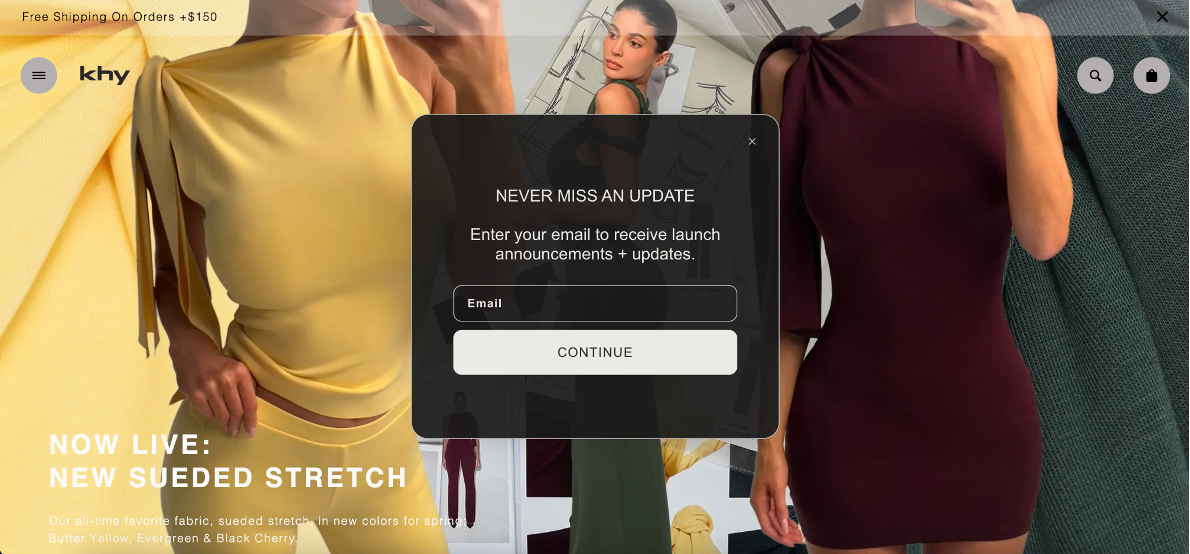
It’s a multi-step popup: after the visitor submits their email, the second step asks for a phone number.
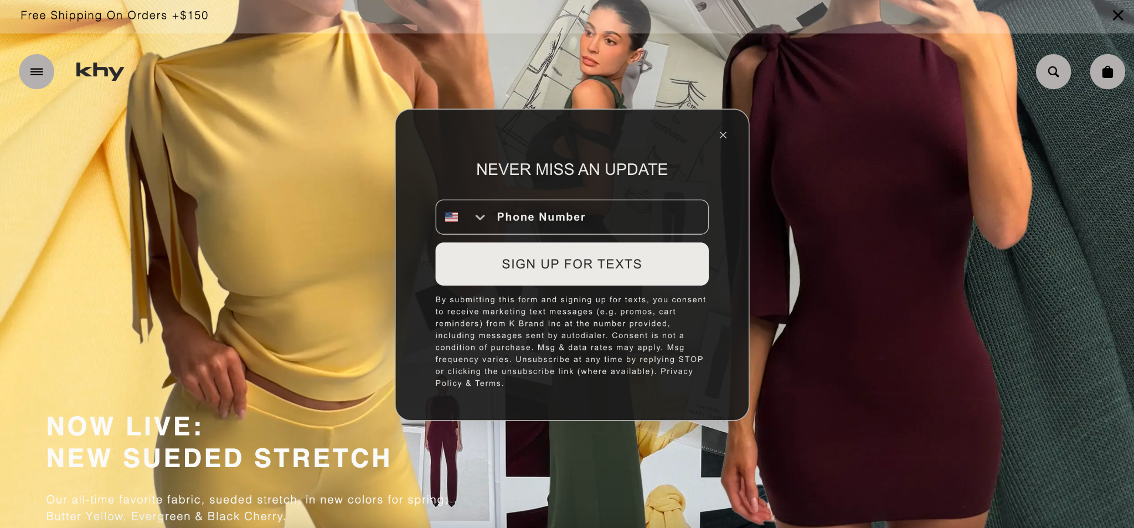
However, it doesn’t offer a discount in exchange for users’ emails—an incentive that could boost conversions.
They also have a free shipping sticky bar at the top of the website, which highlights the threshold to unlock free shipping.

In the cart, there’s a dynamic message showing how close you are to free shipping: “You’re $32 away from free shipping.”
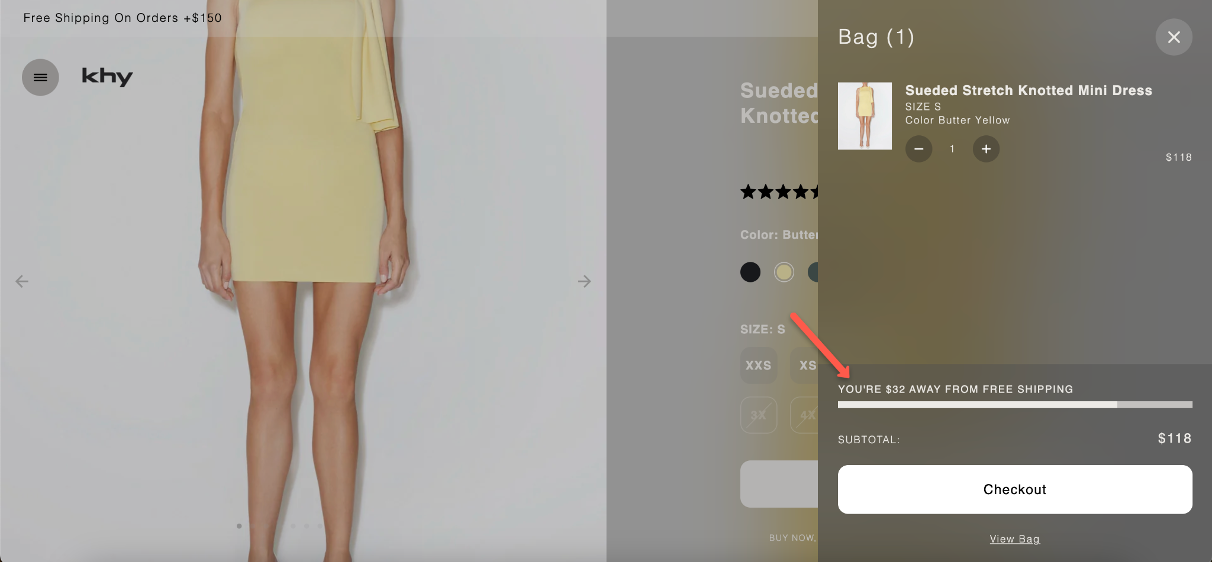
These are all strong tactics for increasing engagement and nudging users toward checkout.
But it’s not all optimized bliss.
KHY is missing live chat, which is crucial for building trust, answering objections, and assisting hesitant shoppers in real time. They also lack a loyalty or referral program—two proven tools for turning one-time buyers into repeat customers and brand advocates.
Takeaway: If you’re driving millions of visitors, you need to plug every leak in your funnel. From trust signals to retention tools, every detail matters.
5. A good digital marketing stack
KHY is built on Shopify Plus, using a carefully selected stack of 15+ apps to support its ecommerce engine.
Here’s a peek at the toolkit:
- Klaviyo for email & SMS marketing
- Gorgias for customer service
- Triple Whale for analytics
- Bazaarvoice & Okendo for social proof
- Route & Optoro for shipping protection and returns
- Checkout Blocks for upsells and personalized checkout flows
It’s clear they’re investing in the backend to deliver a smoother customer journey.
Takeaway: A smart tech stack is the backbone of every high-performing DTC brand. Invest in tools that enhance CX, streamline ops, and track what really moves the needle.
6. Social media is the real engine behind KHY
Kylie’s team doesn’t just rely on her profile. They’ve built a multi-platform social engine that fuels constant buzz.
Instagram is their visual showroom—think glossy photos, aesthetic drops, and perfectly curated glam shots that scream luxury.
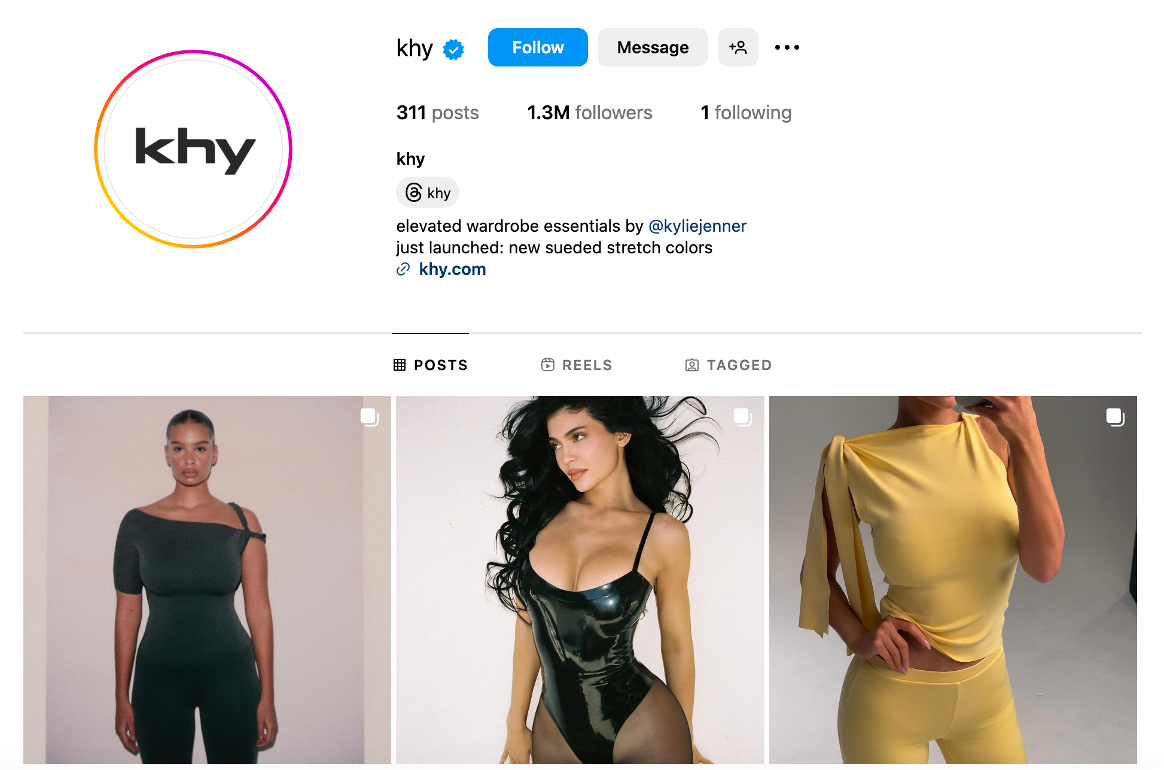
TikTok brings the relatability—casual try-ons, behind-the-scenes moments, and viral-style content that feels less scripted and more scroll-stopping.
Pinterest handles discovery and inspiration, showcasing shoppable pins and user-generated content under the “You in KHY” umbrella to make fans part of the brand.
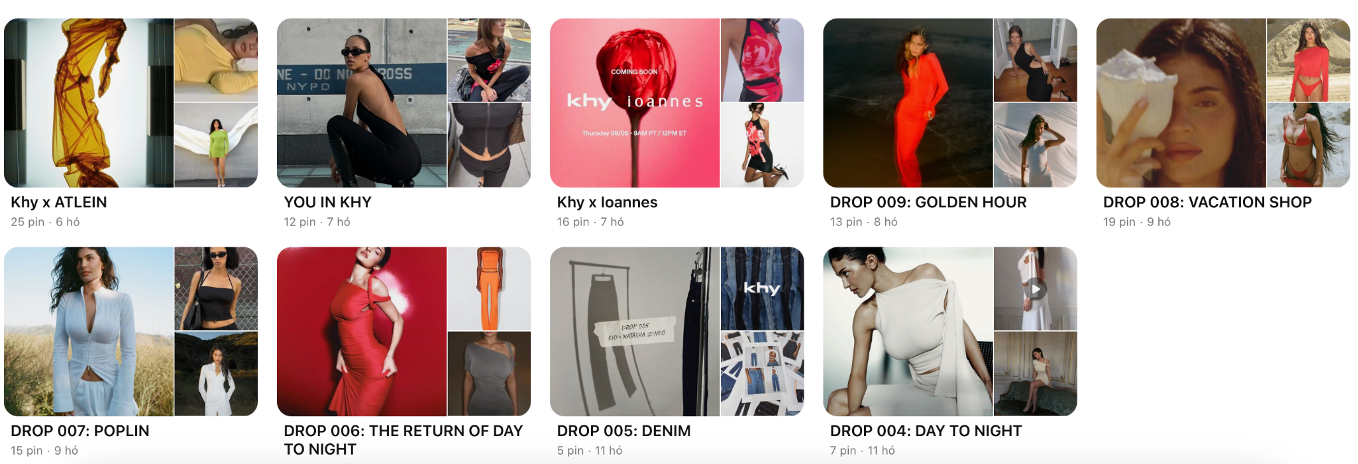
This omnichannel approach helps them stay top-of-mind and hit multiple audience touchpoints.
Takeaway: Don’t just post everywhere—show up differently on each platform. Match your content to the channel’s vibe. Repurposing is efficient, but customization is what actually converts.
Cracks in the foundation: Where KHY is struggling
Despite its glossy exterior, KHY is dealing with some serious growing pains. Let’s break them down:
1. Branding is inconsistent
KHY’s early collections were sharp, intentional, and elevated by high-profile designer collaborations. The messaging positioned the brand as high fashion made accessible, with a strong emphasis on exclusivity and creative vision.
But somewhere along the way, that narrative got lost.
Recent drops feel disjointed—no clear theme, no connecting thread between collections. One month it’s sculptural silhouettes, the next it’s basics with little context. This lack of cohesion weakens the brand identity, leaving customers unsure what KHY really stands for.
On top of that, the website experience—riddled with typos, vague product descriptions, and minimal storytelling—doesn’t match the premium vibe they’re aiming for. It’s a reminder that user experience is part of your brand too. A broken UX can quietly sabotage even the most beautifully shot campaign.
Lesson: Strong brands are built on consistency. If your visual identity, messaging, and product assortment don’t tell the same story, customers start to lose trust—and interest.
2. Product quality is questionable
No brand wants to go viral for the wrong reasons—but that’s exactly what’s happened to KHY.
Across social media and reviews, customers have reported issues with product quality—from flimsy fabric to messy stitching.
Even worse? Some users have raised plagiarism concerns, comparing KHY designs to those of smaller, independent creators.
In an era where authenticity and ethics drive consumer loyalty, these types of claims can seriously damage brand equity. People don’t just want good design—they want to know the brand stands for something.
Lesson: Quality control and originality aren’t optional. If your product doesn’t live up to the brand promise—or worse, is seen as copying others—you’re giving your audience a reason to walk away (and take their complaints to TikTok).
3. Perception problem
Let’s address the elephant in the room: Does KHY actually mean something to Kylie?
To some fans, it feels like a natural evolution of her style and empire. But to others, it reads as a carefully packaged cash grab—just another venture with her name slapped on the label.
That perception matters.
If consumers don’t believe Kylie is genuinely invested in the brand—if they sense it’s more marketing stunt than mission—they’re less likely to stick around. And when that trust erodes, so does loyalty.
Right now, KHY’s voice lacks the personal touch Kylie brings to her other ventures. There’s no strong founder story, no behind-the-scenes content of her actually building the brand. Without that, it’s easy for audiences to assume this is more business than passion.
Lesson: Founder-led brands thrive when the audience can see—and feel—the person behind the product. If people don’t believe you care, they won’t care either.
Wrapping up
KHY is a fascinating case study in how massive influence can spark instant success, but can’t guarantee lasting loyalty.
The brand nailed the launch with hype, exclusivity, and strong aesthetics.
But sustaining that momentum? That takes consistency, quality, and trust—the stuff that doesn’t come with a built-in following.
Whether you’re building your own brand or advising one, the lesson is clear: hype might get you traffic, but strategy keeps them coming back.
Learn more
Looking for more marketing breakdowns? Check out these articles:
- SodaStream Marketing Breakdown: Sustainability, Partnerships & Bold Campaigns
- The Sill Marketing Breakdown: How They Grew into a Leading DTC Plant Brand
- Sol de Janeiro Marketing Breakdown: The Secret Behind Their Explosive Growth
- Drunk Elephant Marketing Breakdown: 6 Proven Strategies You Can Implement Today
- Almave Marketing Breakdown: How They’re Winning the Non-Alcoholic Spirit Race
- Magic Spoon’s Marketing Strategy: The Secret to Disrupting the Cereal Industry
Migration has never been easier
We made switching a no-brainer with our free, white-glove onboarding service so you can get started in the blink of an eye.
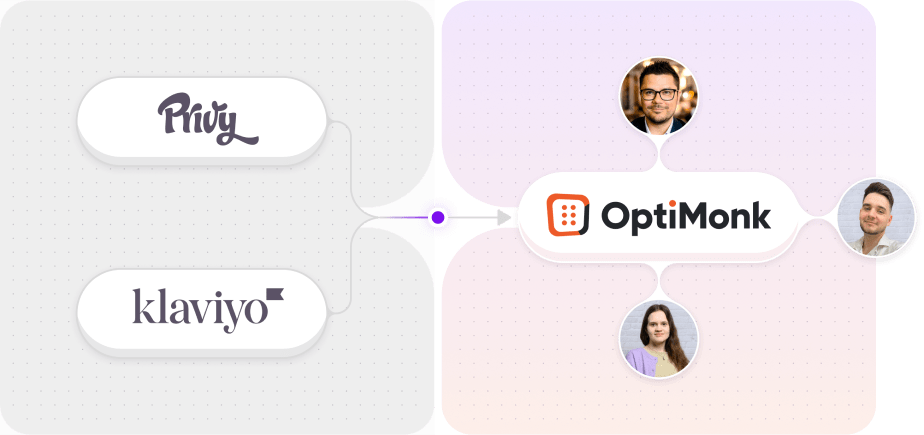
What should you do next?
Thanks for reading till the end. Here are 4 ways we can help you grow your business:
Boost conversions with proven use cases
Explore our Use Case Library, filled with actionable personalization examples and step-by-step guides to unlock your website's full potential. Check out Use Case Library
Create a free OptiMonk account
Create a free OptiMonk account and easily get started with popups and conversion rate optimization. Get OptiMonk free
Get advice from a CRO expert
Schedule a personalized discovery call with one of our experts to explore how OptiMonk can help you grow your business. Book a demo
Join our weekly newsletter
Real CRO insights & marketing tips. No fluff. Straight to your inbox. Subscribe now
Nikolett Lorincz
- Posted in
- Marketing Breakdowns
Partner with us
- © OptiMonk. All rights reserved!
- Terms of Use
- Privacy Policy
- Cookie Policy
Product updates: January Release 2025








